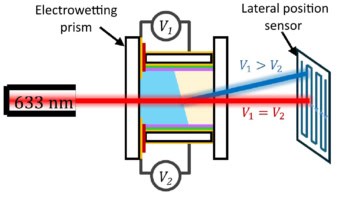
Imaging technologies play a vital role in the advancement of life sciences. In recent years, novel imaging techniques and tools have emerged that allow characterization of molecular mechanisms and biophysical properties of tissue with unprecedented resolution. Alongside, we’ve seen a shift towards exploiting the correlation and combination of complementary imaging modalities. Until now, however, no single publication has provided information on all of the imaging modalities available for biological and preclinical research.
A new book aims to address this shortfall, by compiling a comprehensive collection of bioimaging modalities and microscopy techniques, and explaining how to fully exploit their potential. The book – Imaging Modalities for Biological and Preclinical Research: A Compendium – brings together a series of articles covering a vast range of imaging modalities. The book is divided into two volumes: volume 1 focuses on ex vivo biological imaging and microscopy, while volume 2 examines in vivo imaging, multimodality techniques and emerging technologies.

“Imaging is becoming an indispensable toolset for biomedical research, as it can illustrate all relevant processes of life and disease,” explains editor Andreas Walter. “An overview of available solutions to tackle research questions is essential. It is specifically important for us to bring together the fields of biological microscopy and in vivo preclinical imaging to create synergies and learn from established standards in the different communities. So far, each imaging community has worked in isolation on their advancements, but joint efforts would be beneficial to biomedical sciences.”
The idea for the book arose during a conference run by COMULIS (Correlated Multimodal Imaging in Life Sciences), a network of some 500 imaging scientists working in diverse fields. Walter, who is chair of COMULIS, worked with co-editors Julia Mannheim and Carmel Caruana to create a publication that encompasses all currently available imaging modalities. “It was really a joint effort between medical physicists, biologists and imaging scientists across various fields,” he notes, adding that most of the book’s authors were recruited from the COMULIS network.
Designed to act as a valuable reference work, the book provides overviews of each imaging modality – from fluorescence microscopy to electron microscopy, ultrasound to MRI, and many more. Every chapter guides the reader through the physical principles and biomedical applications of each modality, and includes a discussion on the technique’s strengths and limitations, as well as future developments. To highlight the importance and benefits of multimodality approaches, the editors included a dedicated section on correlative multimodality imaging and image data fusion.
The book is targeted at researchers, physicians, physicists and life scientists working in universities, industry and research labs who wish to deepen their knowledge of bioimaging and the wide range of associated applications. It is also suitable reading for students looking for insight into the complex topics of microscopy and bioimaging.
While most areas of biomedical research can now be addressed with bioimaging, many biomedical scientists are still unaware of the multitude of imaging techniques and their potential. Walter hopes that by introducing the capabilities and limits of bioimaging methods, and providing a basic understanding of contrast mechanisms and biomedical applicability, the book will help such biomedical scientists select the right imaging technique. “The knowledge about and inclusion of bioimaging might even allow them to tackle previously inaccessible research questions,” he says.
- Individual copies of Imaging Modalities for Biological and Preclinical Research can be purchased at the IOP Publishing Bookstore.



